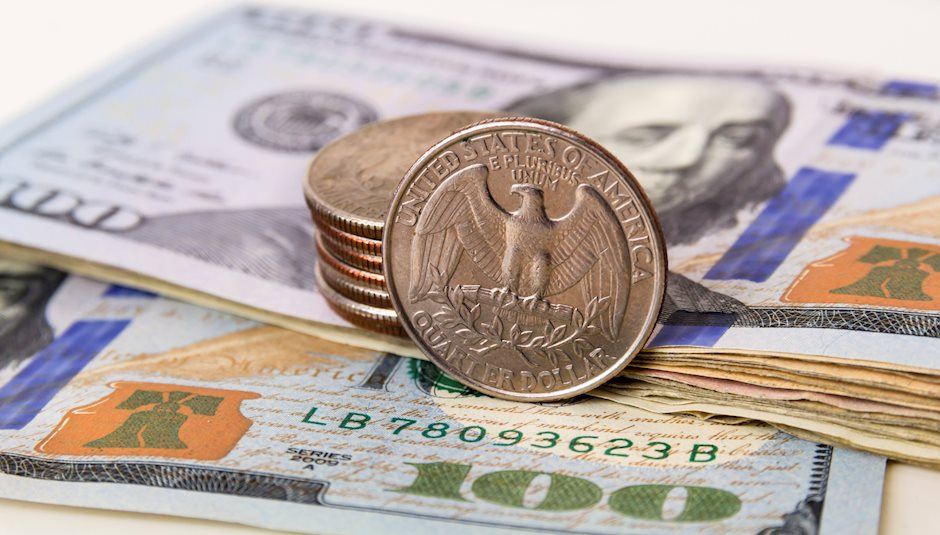US Dollar trades neutral, Fed speakers fail to lift the Greenback as soft data weighs
- The DXY Index is trading neutrally around the 103.80 level with minor day-to-day changes.
- Durable Goods and Confidence data from the US came in weaker than expected.
- The Federal Reserve maintains a hawkish stance as reflected in its reluctance to slash rates, which may limit the downside.
- Fed speakers during the American sessions didn't provide any new insights.

The US Dollar Index (DXY) is currently trading neutrally near the 103.80 mark. The Federal Reserve (Fed) has illustrated its wariness to hastily reduce rates, which has led to a diminished possibility of such cuts in March, while odds in May have decreased to approximately 20%. On the data front, weak mid-tier data reported during the European session is pushing the Greenback down.
If the United States economy continues to show weakness, markets may readjust their expectations, but as for now, the most likely scenario is that the Fed will start cutting in June, which seems to provide support to the USD. Personal Consumption Expenditures (PCE) figures from January and Gross Domestic Product (GDP) revisions from Q4 may change those bets.
Daily digest market movers: US Dollar offers weak profile as US economy starts showing some cracks
- The Conference Board's Consumer Confidence Index for February dropped lower than anticipated with a 106.7 print against the expected 115.
- US Durable Goods Orders plunged by 6.1% in January, far more than the 4.5% decline expected.
- As per the CME FedWatch Tool, the Federal Reserve's unwillingness to cut rates prematurely has shifted market sentiment. Reduction odds for March have dropped to zero, with May's likelihood of a cut down to 20%. As for now, the most likely scenario is that the easing starts in June.
- In case PCE and GDP data come in softer than expected, those odds may change in favor of dovish rhetoric that weighs on the US Dollar.
Technical analysis: DXY bears hold steady below 20-day SMA
The technical situation, as indicated by the daily chart, shows buying momentum gradually waning. This is seen by the Relative Strength Index (RSI) remaining tepid in negative territory, suggesting the possible emergence of selling pressure. Adding to this narrative, the appearance of rising red bars in the Moving Average Convergence Divergence (MACD), an indicator of downward momentum, further attests to this perspective.
However, the index standing with regard to the Simple Moving Averages (SMAs) presents a somewhat mixed picture. The DXY remains below both the 20 and 100-day SMAs, indicating a possible bearish bias for the short term, but its position above the 200-day SMA may imply underlying bullish strength.
Furthermore, the evidence of bears gaining ground could amplify the selling pressure. Therefore, in the short term, it could be suggested that the selling momentum is currently dominating. This, however, does not entirely overshadow the overall trend, which still showcases a certain degree of bullish resilience in the DXY.
Inflation FAQs
What is inflation?
Inflation measures the rise in the price of a representative basket of goods and services. Headline inflation is usually expressed as a percentage change on a month-on-month (MoM) and year-on-year (YoY) basis. Core inflation excludes more volatile elements such as food and fuel which can fluctuate because of geopolitical and seasonal factors. Core inflation is the figure economists focus on and is the level targeted by central banks, which are mandated to keep inflation at a manageable level, usually around 2%.
What is the Consumer Price Index (CPI)?
The Consumer Price Index (CPI) measures the change in prices of a basket of goods and services over a period of time. It is usually expressed as a percentage change on a month-on-month (MoM) and year-on-year (YoY) basis. Core CPI is the figure targeted by central banks as it excludes volatile food and fuel inputs. When Core CPI rises above 2% it usually results in higher interest rates and vice versa when it falls below 2%. Since higher interest rates are positive for a currency, higher inflation usually results in a stronger currency. The opposite is true when inflation falls.
What is the impact of inflation on foreign exchange?
Although it may seem counter-intuitive, high inflation in a country pushes up the value of its currency and vice versa for lower inflation. This is because the central bank will normally raise interest rates to combat the higher inflation, which attract more global capital inflows from investors looking for a lucrative place to park their money.
How does inflation influence the price of Gold?
Formerly, Gold was the asset investors turned to in times of high inflation because it preserved its value, and whilst investors will often still buy Gold for its safe-haven properties in times of extreme market turmoil, this is not the case most of the time. This is because when inflation is high, central banks will put up interest rates to combat it.
Higher interest rates are negative for Gold because they increase the opportunity-cost of holding Gold vis-a-vis an interest-bearing asset or placing the money in a cash deposit account. On the flipside, lower inflation tends to be positive for Gold as it brings interest rates down, making the bright metal a more viable investment alternative.
Author

Patricio Martín
FXStreet
Patricio is an economist from Argentina passionate about global finance and understanding the daily movements of the markets.

















